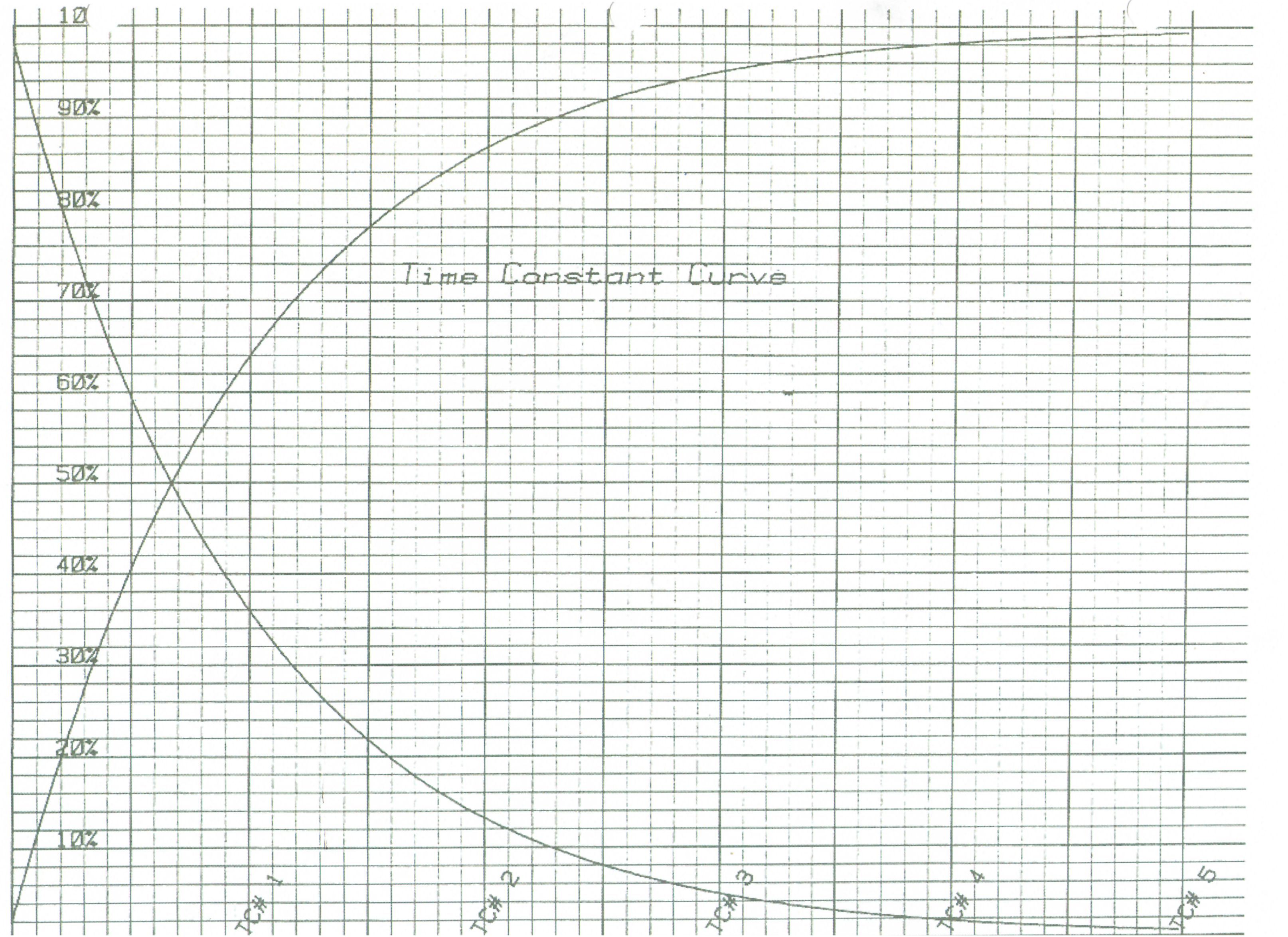Introduction to Time Constants
10/22/2001 >> Revised 09/13/2023
For a lot of those folks that have struggled with the technical aspects of this subject, the mere mention of how to calculate RC and RL Time Constants is enough to send them scurrying to the hills. Actually, there are some folks who have found it quite exciting and informative, but there are many who have indeed had a lot of trouble with that subject. Now, having said all of that, with your permission - I would like to see if I can show you some ways to look at this terrifying subject in such a way as to take away whatever fears you may have had on this subject, and hopefully shed some light on this very important subject. I would also like to illustrate a few concepts that I think will help a great deal.
The Logaritmic Time-Contant Curves (Base e, as 2.781828)
Please note that at the bottom of this chart there are graduationss for TC#1 >> TC#5. Note that at TC#1 the rising value reached ~62%, and that at the next TC that value has reached 62% of what was left, and this continues for each succeding TC. This would be like moving half-way to a wall, and then half-way to what's left.

At the risk of being somewhat redundant here, with similar discussions in other topic areas presented on this site, it would be perhaps helpful to indicate certain topics that are actually tightly related. I would even go so far as to say that in many cases, most folks do not realize just how they do tie together. Not only do they tie together, they really help in understanding each other.
Some examples are:
- Capacitive Reactance:
- Imaginary Numbers, Phase Angles, Resulting Impedance and Linear Integration Circuits
- Inductive Reactance:
- Imaginary Numbers, Phase Angles, Resulting Impedance, and CEMF Indications
- Resistive-Capacitive (RC) Time Constants
- Inductive-Resistive (LR) Time Constants
- Special Effects with Constant Current Sources
